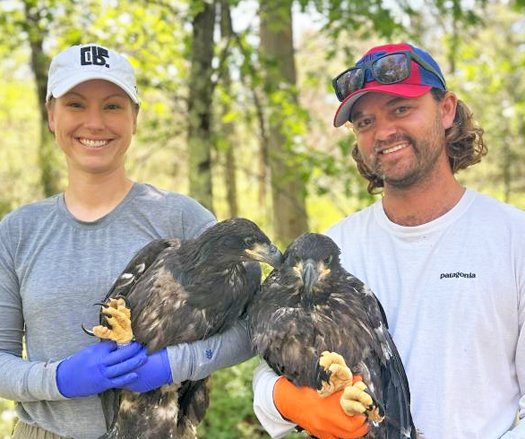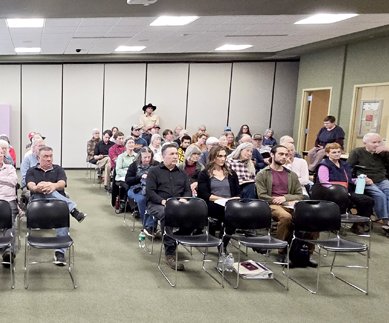DRIFTLESS - Problems with the Emerald Ash Borer have grabbed headlines in recent years as a threat to the forest resource in Southwest Wisconsin. Oak Wilt is another plant disease that has potential to damage the forests, particularly as oak is such a prevalent species in our forest mix.
“Oak Wilt is increasingly a concern in Crawford and Vernon counties,” WDNR Senior Forester Christine Walroth said. “The problem is that landowners can have a big problem before they even become aware that it is happening, and don’t know that the restrictions on logging in areas experiencing the infestation, between April 1 and July 15, apply to their woodlot.”
Walroth, who works out of the Viroqua office, says that areas to the north in the Driftless Area, in Monroe County for example, seem to have a much more advanced problem. She says that this likely relates to the sandier soils, which tend to put more stress on stands of oak, making them more vulnerable to the problem.
WDNR Region Team Supervisor Mike Finlay said that the Driftless Region in general is less favorable to the spread of Oak Wilt in areas where the soils are heavier.
“Areas where the soils are heavier tend to slow the spread of Oak Wilt underground through the roots,” Finlay explained. “Also, the rocks and cliff faces help to prevent an infested area from spreading to another area.”
Climate and forests
According to a report, Climate Change Field Guide for Southern Wisconsin Forests: Site-level considerations and adaptation,’ by the USDA Northern Forests Climate Hub, just released, annual temperatures have already increased two to three degrees Fahrenheit across southern Wisconsin since 1950. Winter is warming about twice as fast as other seasons, and minimum temperatures are increasing faster than maximum temperatures.
Warmer temperatures will have cascading effects on forests, related to hydrology, drought risk, growing season length, germination success, and disease and pest problems.
“Unfortunately, scientists lack basic information on the climatic thresholds for many forest pests, and we can’t predict the pathways of infection, dispersal, and transmission for diseases,” the recent USDA report states.
“Based on our current knowledge, we assume that forest pests and diseases may be more damaging in Wisconsin’s forests under climate change,” the rport notes. “Forest pests and diseases are generally more damaging in stressed forests, so there is high potential for interactions with other climate change impacts.
“For example, drought stress can weaken a tree’s natural defenses to natural pest outbreaks, while new pests such as the southern pine beetle could expand their ranges northward under future climate scenarios.
“Additionally, we expect longer growing seasons could allow some insects to complete multiple life cycles,” the report explains. “These factors can allow populations to grow rapidly. Furthermore, new pests or pathogens will likely enter Wisconsin during the 21st century.”
What is Oak Wilt?
“Oak wilt is caused by a fungus, Bretziella fagacearum,” according to the WDNR website. “The fungus invades areas inside the tree where water moves. Later, balloon-like bumps called tyloses are formed and they plug up the water's path through the tree. As water movement inside the tree is slowed, the leaves wilt and drop off the tree.
“Oaks in the red oak group (black, northern red, northern pin and others with pointed leaf edges) get this disease most easily. Oaks in the white oak group (white, swamp white, burr and others with rounded leaf edges) are less susceptible.
“Most oak wilt moves from diseased trees to healthy trees through roots that have become interconnected (root grafts). Most root grafts form between oaks of the same species; grafts between red and white oaks are very rare. In general, red oak roots graft more than white oak roots.
“Oak wilt can also spread above ground by sap-feeding beetles. In the spring, fungal mats (small masses of Bretziella fagacearum) develop under the bark of some trees that have died from oak wilt the year before. These mats force the bark to crack open. The fungus produces a sweet odor that attracts sap-feeding beetles to the mats. The beetles then fly to healthier oaks to feed on sap flowing from fresh wounds, carrying the fungus on them and thus infecting healthy trees.
“Oak wilt also spreads when firewood or logs from infected trees with fungal mats are moved. Fungal mats hide easily in firewood and often go unnoticed,” according to the WDNR.
Impact of Oak Wilt
“If the disease is allowed to progress, it will spread to healthy oaks that are connected by the roots (root grafts) to the diseased trees. In forested areas where oak is common and root grafting is widespread, an ever-widening pocket of dead oaks will form.
“Where oak is mixed with other species and is a minor part of the forest, oak wilt will spread slower and may actually stop where roots are not grafted,” the WDNR website notes. “New pockets of dead oak may also be formed by sap-feeding beetles spreading oak wilt above ground.

Symptoms and signs
“It can be difficult to tell if a tree has oak wilt just by looking at it,” the WDNR website explains. “Use the information below to do a preliminary assessment of your trees and then follow instructions for submitting a sample for testing.
“Symptoms are the characteristics expressed by an infested tree, such as leaf discoloration and wilting and dropping of leaves. Signs are the physical evidence of the pest or disease itself, such as fungal mats beneath the bark of dead oak trees.
“Oak leaves from infected trees show dull green or bronze discoloration around leaf margin while midrib and base are still green. Infected leaves wilt rapidly and drop to the ground in summer.
“Unlike normal leaf fall, the leaves of infected trees drop while still partially green. Fungal mats develop in the fall or spring following the death of a tree infected with oak wilt. These mats, formed underneath the bark, produce spores that are carried by sap-feeding beetles to fresh wounds or recently cut oak stumps.”
Diagnosing problem
“One easy way for a landowner to begin to identify a potential problem is to look for Red Oak trees that look great in June, but begin to turn brown after the Fourth of July,” the WDNR’s Finlay explains. “A landowner could identify those trees, and consider marking them, then going back each year to see if the problem seems to be spreading.”
Finlay says that if a landowner is concerned, they can reach out to their county’s forester to help with an assessment of any potential problems.
If you think oak wilt might be causing problems for your tree, you can send in a sample for examination. There is a small fee for this service.
Collect three twigs (about one-half-inch in diameter and four inches in length) from three different branches with wilting leaves. Be sure these samples still have living wood and leaves. Scratch the sample branch with your fingernail. If the wood under the bark is a light color (white to green), the sample is fresh. If the wood is brown or dark, it is too old to be sampled. Wrap fresh samples in wax paper and keep them cool until you mail them to:
Plant Disease Diagnostics Clinic
University of Wisconsin - Madison
1630 Linden Drive
Madison, WI 53706-1598
“Red Oak is an important tree in the Driftless Area, and it is challenging to regenerate,” Finlay notes. “The tree requires lots of sunlight to grow, and it suffers from predation by deer as well. For these reasons, Finlay stresses that it is crucial to maintain the stands so we can continue to have self-regeneration from acorns as opposed to regeneration through replanting.”




